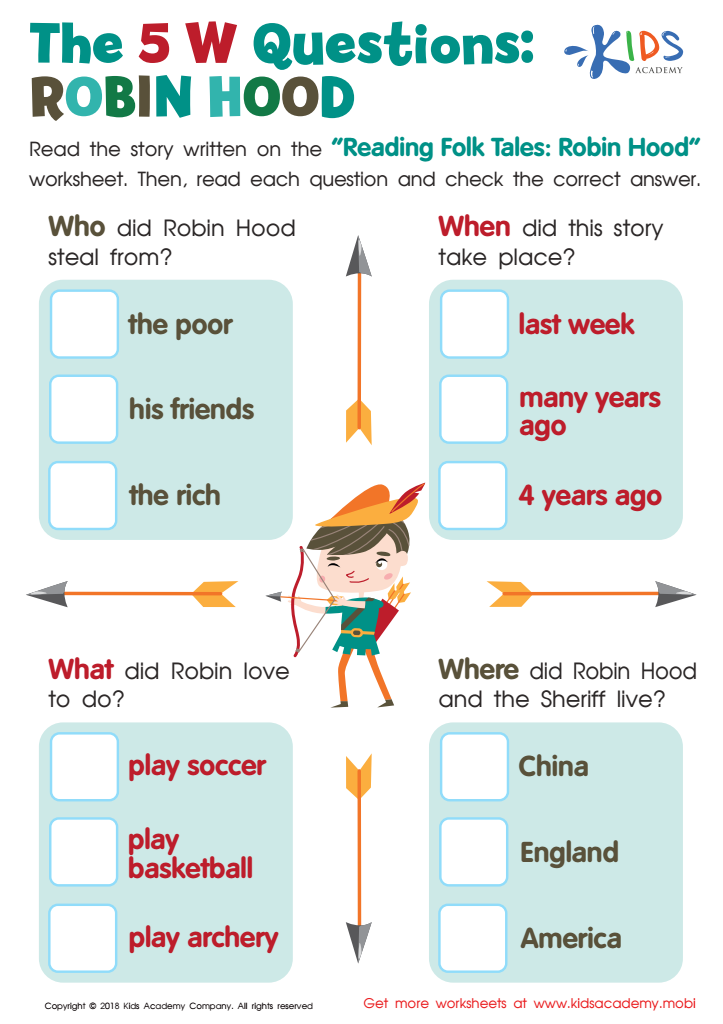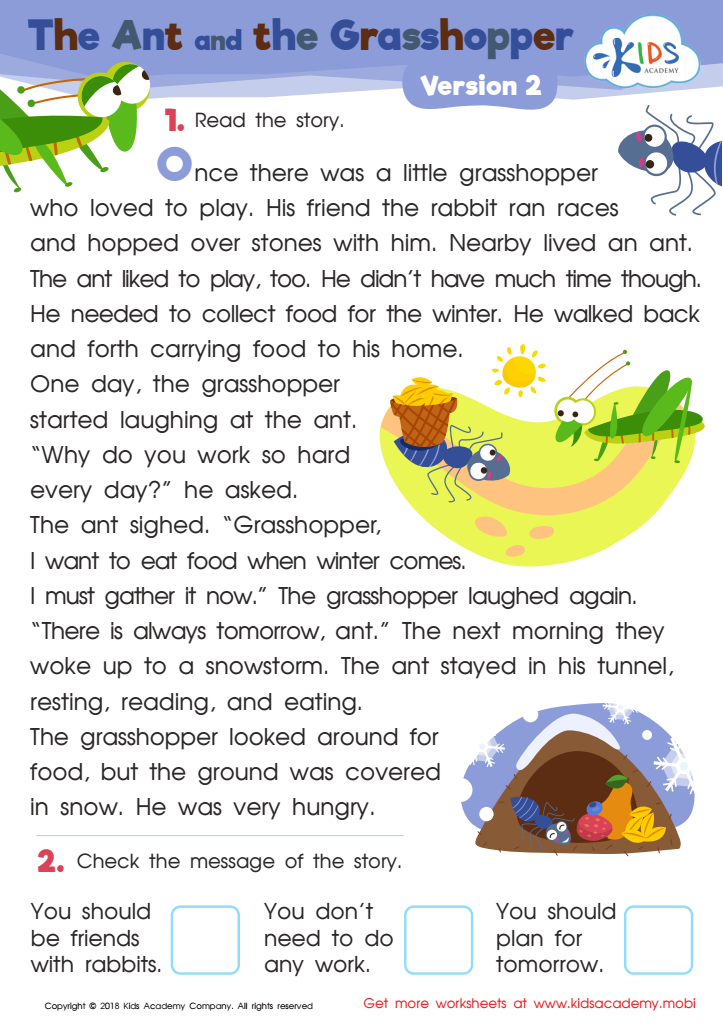Fairy Tales worksheets activities for Ages 3-8
63 filtered results
-
From - To
Discover a world of imagination with our Fairy Tales worksheets and activities for children ages 3-8! Designed to enhance early literacy and critical thinking skills, these engaging resources bring beloved stories to life while sparking creativity. Your little ones will enjoy fun activities like coloring pages, story sequencing, and character text connections that promote reading comprehension and artistic expression. Each worksheet is carefully crafted to suit different learning levels, making it easy for educators and parents to guide young learners through enchanting adventures. Explore our extensive collection of printable materials to inspire a love for storytelling and foster a growth mindset!


King Midas Worksheet


The Boy Who Cried Wolf Part 2 Worksheet


The Boy Who Cried Wolf Part 1 Worksheet


“The Princess and the Pea” and “Cinderella” Worksheet


“The Princess and the Pea” or “Cinderella” Worksheet


Craft and Structure: Assessment 3 Worksheet


Craft and Structure: Assessment 2 Worksheet 2


Craft and Structure: Assessment 1 Worksheet


Little Red Riding Hood: Illustrations Worksheet


Puss in Boots Illustrations Worksheet


Which Character Worksheet


Front of the Book Worksheet


Craft and Structure of Stories: Assessment 1 Worksheet


Robin Hood's Day Off Worksheet


Antonyms: Prometheus Worksheet


The 5 W Questions: Robin Hood Worksheet


Who Are The Characters Worksheet


Puss in Boots: Questions Worksheet


Synonyms: The Tortoise and Hare Worksheet


The Ant and The Grasshopper Version 2 Worksheet


Across Genres: Character Check Worksheet


Sequence: Jack and The Beanstalk Worksheet


Jack and Beanstalk Worksheet


Three Little Pigs Vocabulary Worksheet
Fairy tale activities for children aged 3-8 play an essential role in early childhood development, uniquely combining fun with valuable learning opportunities. These activities foster a child's imagination, encouraging creativity as they explore fantastical worlds and characters. Listening to and engaging with fairy tales builds crucial literacy skills, enhancing vocabulary and comprehension as children encounter new words and narrative structures.
In addition to promoting cognitive growth, fairy tales often carry moral lessons, teaching children about values such as kindness, bravery, and honesty. By discussing these themes, parents and teachers can facilitate critical thinking and ethical reasoning, helping children internalize important life lessons.
Social skills also flourish through fairy tale activities. Group storytelling, role-playing, or puppet shows encourage collaboration, communication, and empathy, as children learn to see the world from different perspectives. Furthermore, these activities often bridge cultural gaps, exposing children to diverse tales from around the globe.
Lastly, fairy tales ignite a passion for reading, laying the groundwork for lifelong learning. By incorporating fairy tale activities into learning routines, parents and teachers can nurture well-rounded, emotionally intelligent children equipped with the skills they need to thrive in an increasingly complex world.
 Assign to My Students
Assign to My Students









.jpg)

.jpg)









